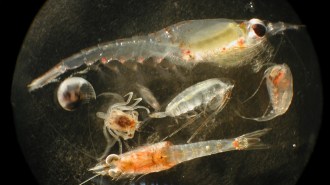‘Bug traps’ in Gulf to use BP oil as bait
They'll assess biodegradation and identify the bugs responsible.
To assay how appetizing polluting oil is to native Gulf micobes — and how rapidly they degrade it — researchers plan to set 150 “bug traps” on August 26. Their bait: the same oil that had been spewed for months by BP’s damaged Deepwater Horizon well.
An August 24 paper published online in Science described rapid biodegradation of oil constituents in wandering deep-sea clouds 1,100 meters below the Gulf of Mexico’s surface. The plumes’ source was atomized oil jetting out of pipe leaks during the months following the blowout of a deep water well.
The new paper dealt with data acquired in May and June. But in describing his team’s findings, Terry Hazen of Lawrence Berkeley National Laboratory, offered a provocative update. He said that a plume of oil his group had been following had disappeared — apparently gobbled up by native Gulf bacteria — within two weeks of the damaged well’s capping on July 15.
That pronouncement has generated plenty of interest and controversy. But the lack of an available plume hasn’t ended efforts by Hazen’s team to assay what’s happening to oil still in the Gulf. The researchers have incorporated some of the BP crude into polymer beads. A remotely operated vehicle will take bunches the baited beads and tether them to a line or pipe directly below a drilling ship — one stationed directly over the wellhead. The microbe baits will be anchored at depths of 1,500, 1,100 and 200 meters. Some will even be deployed at the surface.
Periodically over the course of a month, the researchers will retrieve groups of traps from each depth, freeze them and then send them back to the lab for analysis. The scientists will study them to monitor what happens to the oil over time at varying depths as a function of the microbial communities dining at these traps. And that’s possible, Hazen says, “because we can co-extract DNA, RNA and organisms from the surface of the bug traps” along with whatever residual oil molecules remain.
His team will also sample sediment near the wellhead to see if any of the oil settled out there.
It’s a clever means of opening temporary lunch carts of crude oil for carbon-hungry microbes. And these mobile restaurants can supply useful data in the absence of any further leaks — or plumes of dispersed oil.
See also: Deep-sea plumes: A rush to judgment?







